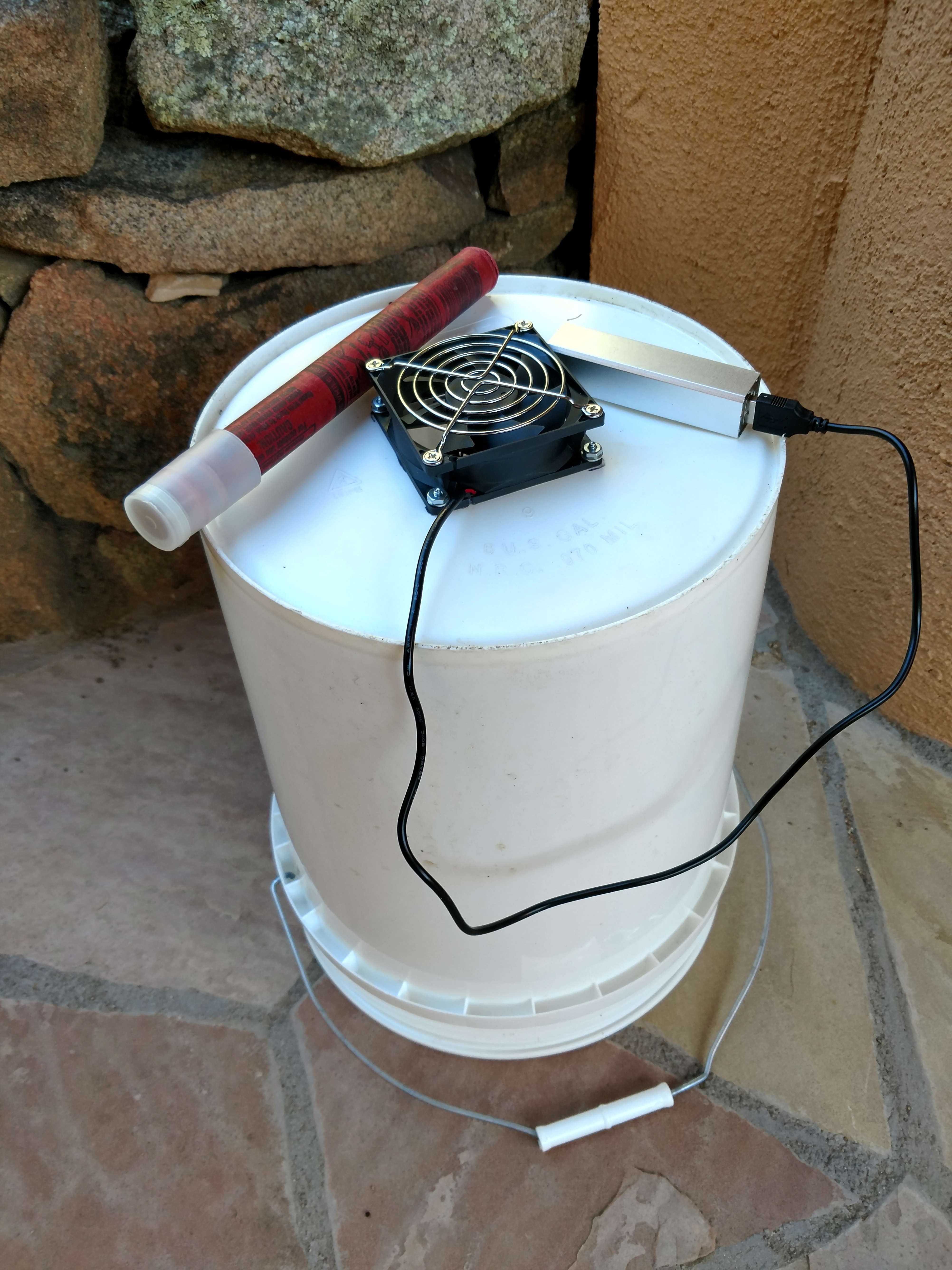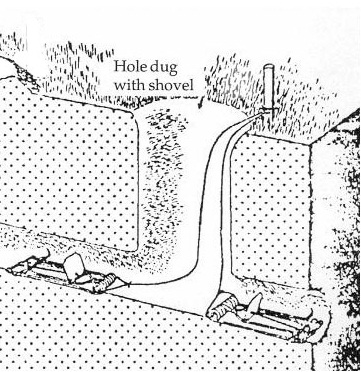 Updated Gopher Device - September 27, 2017 Jeff Schalau, Agent, Agriculture & Natural Resources University of Arizona Cooperative Extension, Yavapai County Pocket gophers are probably the most common vertebrate garden pest encountered by Northern Arizona gardeners. I’ve written about pocket gophers and their biology several times previously (see links with the online edition – URL below). Pocket gophers are one of the few mammals that can be managed without obtaining a permit (along with rock squirrels and woodrats). In 2000, I started experimenting with this gopher management device shown to me a Master Gardener volunteer. This device is inexpensive, easy to build and works well in loamy and clay soils. The porosity of sandy soils makes it less effective. It has saved my vegetable garden from severe gopher destruction the last two years. Trapping is still the most effective method to manage pocket gophers. However, when pocket gophers inhabit an already planted area, it can be difficult to set traps without disturbing established plantings. This device is a simple blower which generates positive pressure and pushes smoke generated by a highway safety flare into the entire burrow system to asphyxiate the gopher. Some similar methods use propane or oxygen/acetylene gas to explode gopher burrows. The device consists of a five-gallon plastic bucket, a flush mounted "pancake" fan, and a supply of highway flares (the kind put out on the road to warn other drivers of a hazard). Five-gallon plastic buckets are readily available from food establishments and hardware stores and highway flares (Fusees) are available from auto parts stores. The fan can be purchased new from local or online vendors. My 2000 model used an AC-powered fan which required close proximity to electricity and extension cords. My 2017 model has a USB-powered fan which is powered by a USB battery pack. Being battery powered makes it completely mobile. Before building, determine the fan’s air flow direction and be sure to attach it so the air is being pulled from outside the bucket and will blow into the bucket and burrow. To build the device, place the five-gallon plastic bucket upside down on the ground, place the fan on the center of the bottom of the bucket, and trace the outline, the screw holes, and the circular opening of the fan onto the bucket. Cut only the circular hole where the air passes through and drill holes to attach the fan. Use small machine screws to attach the fan to the bucket making sure the air blows into the bucket when the power is on. To deploy, a major gopher tunnel is exposed, flares are ignited, edges of the bucket are sealed with loose soil, the device is powered up blowing the smoke from the ignited highway flare into the gopher's burrow. It is best to expose the main tunnel which goes in two directions rather than a terminal tunnel that flows in only one direction. The smoke of flares is heavier than air. You should see small plumes of smoke rising from nearby tunnels and air vents after the device is powered up. I usually light two flares at a time with one going in each direction of the exposed tunnel and allow the 15 minute flares to burn with forced air for about 3 minutes (until I see smoke coming from remote portions of the burrow). Then, I cut the power to prevent the fan from blowing the smoke completely out of the burrow system. With luck, the smoke asphyxiates the gopher. Over time, I have also found that if the smoke does not kill the gopher, it shows you the extent of the burrow system and potentially makes the offending gopher easier to trap. Here are some notes from my experiences. It is easier to find the tunnel network where recent activity has taken place (near fresh mounds). Keep clear of the area to avoid breathing the smoke. Clear dried vegetation from the burrow area and have a source of water nearby in case a fire is accidentally started. Like any new activity, using this device effectively requires practice and subsequent observation. Of course, this device is a “home remedy” as highway flares are not labeled for use as a pesticide. Other smoke-generating “gopher bombs” are available commercially, but burn for a shorter period yielding less smoke. Be sure to visit the online edition for photos and links to additional information (see URL below). Follow the Backyard Gardener on Twitter – use the link on the BYG website. If you have other gardening questions, call the Master Gardener help line in the Camp Verde office at 928-554-8992 or e-mail us at verdevalleymg@gmail.com and be sure to include your name, address and phone number. Find past Backyard Gardener columns or provide feedback at the Backyard Gardener web site: http://cals.arizona.edu/yavapai/anr/hort/byg/. Photos  Gopher management device consisting of a five-gallon plastic bucket, USB computer fan, and USB battery pack. Fifteen minute highway flare is used to generate smoke which asphyxiates the gopher (photo by Jeff Schalau).
Gopher management device consisting of a five-gallon plastic bucket, USB computer fan, and USB battery pack. Fifteen minute highway flare is used to generate smoke which asphyxiates the gopher (photo by Jeff Schalau). Schematic showing a top view and side view of a typical pocket gopher burrow system.
Schematic showing a top view and side view of a typical pocket gopher burrow system. Drawing showing typical pocket gopher trap set. Rather than setting traps, place lit highway flares in place of each trap, and place the device over the hole opening and allow the fan to run for about three minutes (until smoke is seen at distant burrow openings). After three minutes, turn the fan off and cover the holes with soil.
Drawing showing typical pocket gopher trap set. Rather than setting traps, place lit highway flares in place of each trap, and place the device over the hole opening and allow the fan to run for about three minutes (until smoke is seen at distant burrow openings). After three minutes, turn the fan off and cover the holes with soil.Additional Resources Managing Pocket Gophers Backyard Gardener, November 2, 2016 cals.arizona.edu/yavapai/anr/hort/byg/archive/managingpocketgophers2016.html Pocket Gophers University of California Agriculture and Natural Resources ipm.ucanr.edu/PMG/PESTNOTES/pn7433.html |